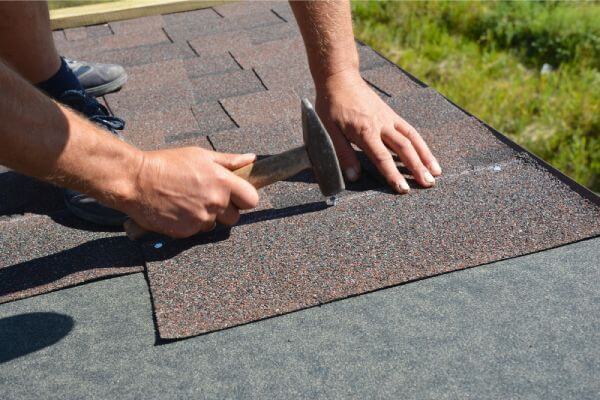Choosing between asphalt vs. architectural shingles can have a lasting impact on the appearance, performance, and value of your roof. Knowing the differences between these two shingle types is important when making the right decision for your home. Asphalt shingles are known for their affordability and simplicity, while architectural shingles offer enhanced design and durability. Both options serve specific needs depending on factors such as cost, lifespan, and overall aesthetic preferences.
Material Composition Differences Between Asphalt and Architectural Shingles
Asphalt shingles are made from a base material, usually fiberglass, that is coated with asphalt and mineral granules. This composition creates a lightweight, durable product that effectively protects homes against the elements. Asphalt shingles are popular for their affordability and ease of installation, making them a common choice for homeowners on a budget. While basic in design, asphalt shingles still provide dependable weather resistance.
Architectural shingles, on the other hand, are constructed with multiple layers of material, giving them a thicker and more dimensional appearance. This enhanced composition allows for greater durability and a more visually appealing look, often resembling more expensive roofing materials like wood or slate. Architectural shingles are favored for their longer lifespan and stronger resistance to weather-related damage.
Durability and Longevity of Asphalt vs. Architectural Shingles
Asphalt shingles typically last around 15 to 20 years, depending on environmental conditions and maintenance. They provide sufficient protection for most homes, but their lifespan may be shorter in regions with harsh weather. Over time, asphalt shingles may lose granules or crack, which can reduce their effectiveness and necessitate earlier replacement. However, for many homeowners, the balance of cost and durability makes asphalt shingles a practical option.
Architectural shingles are designed to last longer, often up to 30 years or more. Their thicker layers and advanced composition contribute to their enhanced strength and durability, allowing them to withstand severe weather conditions better than asphalt shingles. Homeowners who invest in architectural shingles often do so with the expectation of reduced maintenance and fewer repairs over the roof’s lifespan.
Weight and Thickness Comparison of Asphalt and Architectural Shingles
Asphalt shingles are relatively lightweight, which makes them easier to handle during installation and suitable for roofs that cannot bear heavy loads. Their thin, uniform structure contributes to their lower cost and ease of transport, making them a practical option for many roofing projects. Although they are thinner, asphalt shingles still provide adequate protection for most residential applications.
Architectural shingles are notably heavier and thicker than asphalt shingles, which is a direct result of their layered design. This added thickness contributes to their dimensional appearance and improved durability. However, the extra weight can require stronger roof support structures. While this may increase the overall installation complexity, the added benefits of enhanced longevity and visual appeal often outweigh the additional effort.
Aesthetic Appeal and Design Variety in Shingle Types
Asphalt shingles generally come in flat, uniform styles with limited design variation. While available in several colors, they lack the dimensional appeal of more expensive materials. Homeowners often choose asphalt shingles for their straightforward appearance and low cost, prioritizing function over form. These shingles are commonly used on homes where the roof’s design is not a major focal point.
Architectural shingles, by contrast, offer a wide range of styles, textures, and colors that can significantly enhance the appearance of a home. The multi-layered design creates depth and shadow, mimicking the look of high-end materials like cedar or slate. Homeowners looking to boost their home’s curb appeal often opt for architectural shingles, as they provide a more visually dynamic and attractive finish.
Installation Process for Asphalt Versus Architectural Shingles
The installation of asphalt shingles is relatively simple and quick due to their lightweight nature and standard sizing. Roofers can often complete the installation in a shorter amount of time compared to heavier materials. The ease of installation also contributes to the lower overall cost of using asphalt shingles, making them a cost-effective choice for homeowners seeking affordability.
Architectural shingles, being heavier and thicker, require a bit more time and effort during installation. Their more complex structure demands precision to ensure they are properly aligned and fastened, which can increase labor costs. However, the longer lifespan and superior performance of architectural shingles can make the additional investment in time and resources worthwhile for homeowners seeking a premium roofing solution.
Cost Comparison of Asphalt and Architectural Shingles
Asphalt shingles are generally the more affordable option, with lower material and installation costs. This makes them an attractive choice for homeowners on a budget or those looking for a quick roofing solution. However, while the initial investment is lower, asphalt shingles may require more frequent repairs or replacement, potentially increasing long-term costs.
Architectural shingles are more expensive upfront due to their advanced composition and increased durability. The higher price reflects their longer lifespan, reduced maintenance needs, and enhanced aesthetic appeal. Homeowners choosing architectural shingles often view the higher initial cost as a worthwhile investment for the added longevity and overall value they provide to a property.
Weather Resistance and Performance in Harsh Conditions
Asphalt shingles perform well in most standard weather conditions but can struggle in extreme climates. High winds, heavy rain, and snow can cause damage to the shingles, leading to issues like curling or cracking. In regions with harsh weather, asphalt shingles may require more frequent inspections and maintenance to ensure their continued effectiveness.
Architectural shingles offer improved resistance to harsh weather conditions due to their thicker, multi-layered construction. They are less likely to be affected by high winds or heavy rainfall, providing better protection in regions susceptible to inclement weather. The added durability of architectural shingles makes them a popular choice for homeowners seeking greater peace of mind during stormy seasons.
Maintenance Requirements for Asphalt Versus Architectural Shingles
Asphalt shingles require regular maintenance to ensure they remain in good condition over time. Homeowners should check for loose or damaged shingles after storms, clean gutters to prevent water buildup, and inspect for any signs of wear that could lead to leaks. Routine maintenance helps prolong the lifespan of asphalt shingles, though more frequent repairs may be needed compared to other materials.
Architectural shingles are generally lower maintenance due to their superior durability and weather resistance. While still requiring periodic inspections, they tend to be less prone to damage and wear over time. This reduced maintenance need can save homeowners both time and money, making architectural shingles a more convenient choice for those seeking a long-lasting roofing solution.
Warranty Differences Between Asphalt and Architectural Shingles
Asphalt shingles often come with shorter warranties, typically ranging from 20 to 25 years. While this can be sufficient for many homeowners, the shorter warranty reflects the expected lifespan of the product. If repairs are needed within the warranty period, homeowners can usually expect limited coverage for material defects.
Architectural shingles, with their longer lifespan, are usually backed by more extensive warranties, often covering 30 years or more. These warranties offer homeowners greater peace of mind, as they provide coverage for a longer period and often include protection against a wider range of issues. The extended warranty reflects the higher quality and durability of architectural shingles.
Choose Between Asphalt and Architectural Shingles from Harveys Five Star Roofing
If you’re deciding between asphalt and architectural shingles, we at Harveys Five Star Roofing can help you choose the best option for your home. The long-lasting, protective qualities of asphalt shingles make them an affordable choice for homeowners seeking reliable performance. If you’re looking for a more premium option, architectural shingles offer heightened durability and a more striking appearance, ideal for boosting your home’s curb appeal. We pride ourselves on offering the highest quality roofing services in Sioux Falls at Harveys Five Star Roofing, committed to ensuring your home is fully protected for years to come.









